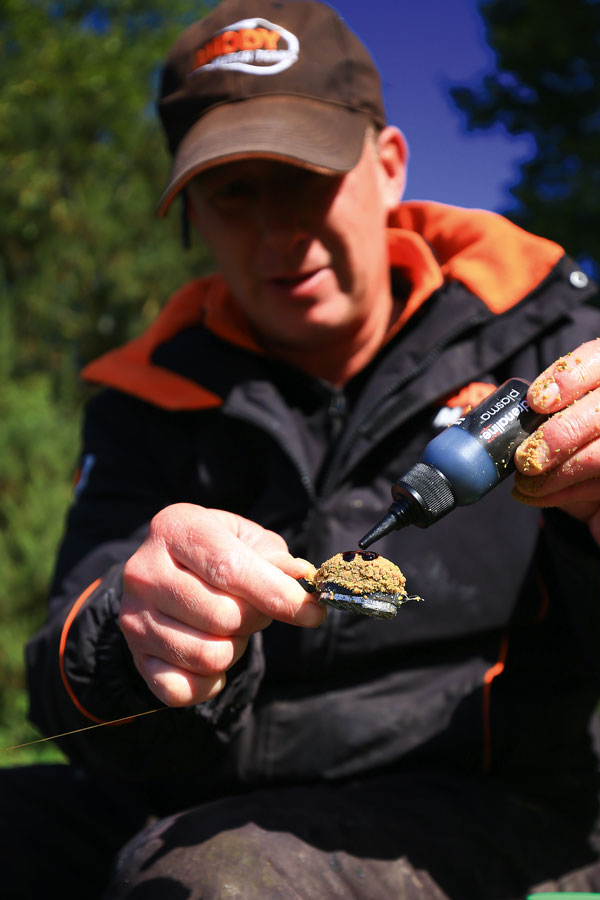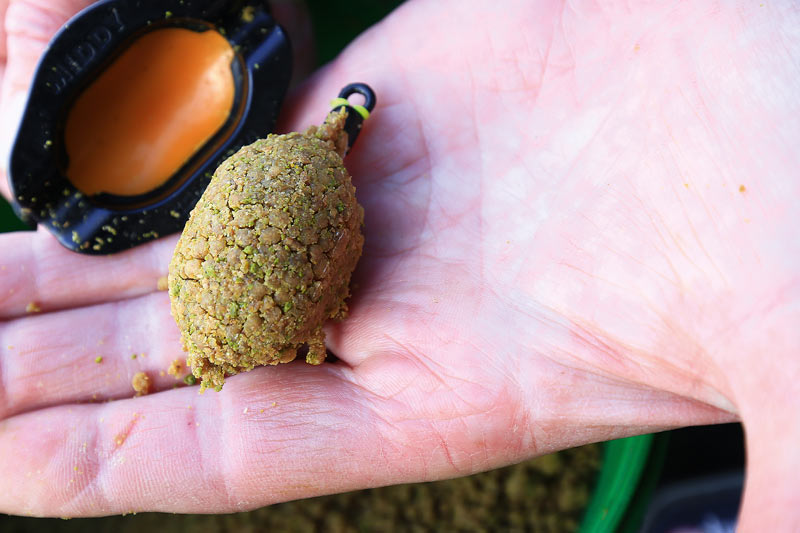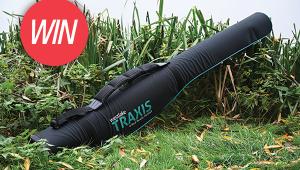More Than Meets The Eye!

Chris Cameron has a real knack of catching fish on rod-and-line tactics, and it’s all down to some clever feeding and thinking.
Middy’s Chris Cameron holds a long list of match fishing success stories, with the most notable being Match this winner in 2014 and an agonising second place at this year’s event. but success is ever-present and most recently he has recorded three wins in his last three visits to today’s venue, Packington Somers, in the West Midlands.
A big part of Chris’s match fishing game is conducted with rod-and-line tactics, and an evolution from a specimen background certainly laid sound foundations in understanding the best approach and rationale, particularly when proceedings are often carried out at some distance. Accuracy and a broad palette of understanding is needed when there is that much water and so many potential tactics and pitfalls to digest.
A general understanding of Method and bomb fishing may be to keep it simple and accurate, and success will follow. However, Chris likes to keep things simple but in a ‘complex’ sort of way; well, complex to the onlooker, but simple once rehearsed and applied and very logical after a brief explanation.
Today’s venue then is Packington Somers, a popular choice for our seasoned match participant, with a peg on Geary’s high bank with plenty of water to go at, so the options are limitless. Chris is going to demonstrate the tactics he employs for this sort of swim with his approach built around two rods (although not both at the same time!) – one Method feeder and one bomb – and how these setups work in harmony, and the relevance and logic of when you should be on each and how they fit with a particular feeding regime.
As with all aspects of match fishing it’s important to adopt your own style, and a method forged in your own way will nearly always be more successful in terms of results and maybe the glory of that big match win.
The weather is okay, with a light southwesterly wind giving the surface a bit of a ripple; it’s a very bright day but the downside is that last night the temperature really plummeted and now we’re back up to 16ºC, so not the best conditions if it’s big bags you’re after. To be realistic with target weights is always a good starting point and something to base decisions on as the match or session progresses.
“When tackling a typical open-water swim I like to build my decisions around a particular feeding routine,” states Chris, “and in today’s case that is to choose an area at 30 to 40 yards and maintain constant feed in that area. This gives me my starting or reference point and all the rest of my decisions can radiate around this area.
Top Tip

Chris often adds a smear of Plasma to his feeder!
“The fish may want to be in this column of feed or maybe not remotely interested, but by maintaining this feeding I have the option to fish in that area or plunder the periphery and search the extremes of my swim, and it gives me a specific area to keep returning to.
“If I get signs that the fish are happy to be in my feed then a couple of basic options exist. If it’s one of those days where the carp are feeding well on the pellets then that’s when it’s normally a bomb approach, and the fish will pick up a hair-rigged banded pellet with ease as it exactly matches the loose feed. This is perfect when they are feeding with that confidence, and casting into the feed and following with a double pouch of pellets can be a big-weight tactic.
“On other occasions when the fish are happy to be in the feed but not in full mopping-up mode then a Method feeder can be more effective, as it provides more of a target and bites on some days come much quicker. It’s important to keep the feeding constant and ring the changes with the Method, bomb and hook baits, rather than altering the feed.
“There will be a point in the day when the carp feed better, so whenever this is by keeping that feed going in you’re ready to pounce when they do turn on. If you stop that feeding there’s a chance you can miss your spot and that weight-building window as it’s not always in the latter stages.
“These options are there for interpretation and it’s these decisions that make or break my match, but at least by maintaining this feed it makes it easier to gauge the mood of the fish and their willingness to feed, or not as the case I suspect may be today. However, I will keep an open mind as the conditions are equal for all competitors in a match situation and again it’s the realistic predictions of fortune that will prosper.
“My rod-and-line work generally involves this two-rig approach, and a couple of Middy 4GS 11ft feeder rods provide the power. For me an 11ft length is plenty, even for the big chucks. Today in this peg I think about 80 yards to the posts will be the extremes of where I’m casting, and these rods will punch out a 30g Method this sort of distance with relative ease.
“So one Method rod with that 30g Middy Gripper flat bed and the other with a 21g Middy Square Match bomb, both tied to M-Tech 8lb reel line and I use either 0.18mm or 0.20mm hooklengths depending on conditions, and likewise a KM-3 size 16 or 18 hook depending on conditions and bait size.
“I am loading my Method with micro pellets and a small amount of Adrenaline Method Crystals, and this combination has worked well for me recently so I’m confident that it will give the best results. The hook baits for me are varied and there are plenty of options, too many really, but these fish can be fussy and it’s important to keep changing as carp can be very specific and you need to be on their preferred choice as soon as you can.
“But to simplify hook-bait choice it’s either a standard pellet or a bright choice of dumbbell or wafter, or in the colder months discs of bread.
“My approach is based around regular feed and that’s with 8mm Coppens or 6mm Skretting pellets, as both have unique characteristics.
“The Skrettings will sink slower and break down quickly and the Coppens will plummet to the bottom and take hours to break down, so it’s a case of feeding one or the other or a mixture of both. I can’t really say which is the best option as it’s just what’s right on the day, but today it’s a mixture of both as the fish aren’t really giving much away or forming any sort of regimented pattern.
“In respect of how often and how much feed again it depends on the venue, species and all the other factors like the weather, your target weights and so on, but you can easily get through three pints in a session.
“Bites are a bit scarce today so I’m casting left and right of my feed and to the posts at 90 yards with the Method, but it’s important to keep firing in that feed just in case they are switching on. As you can see, it’s a very busy sort of match and the decisions on where to cast really are the key and having that feed area to keep returning to is vital.
How To Load Up

1. Push the feeder out of the Kompacta...

2. ... and add a blob of Plasma
“These random casts often produce a fish, especially on difficult days, and that bait just dropping on a fish that’s happy to sit off my loose feed can be the trigger needed.
“It’s been hard going today and just about as hard as it can get, and I’ve really only nicked fish from all over with just one carp and three bream from in the feed, but I think with last night’s dip in temperatures this is about what I expected and a realistic expectation.
“To summarise then, with a Method and bomb approach keep feeding and cast everywhere, give yourself plenty of hook-bait choices and try and form your own routines, because small changes to a set routine are easier to evaluate for more success next time.”
Words & Pics: Steve Haywood
- Log in or register to post comments













